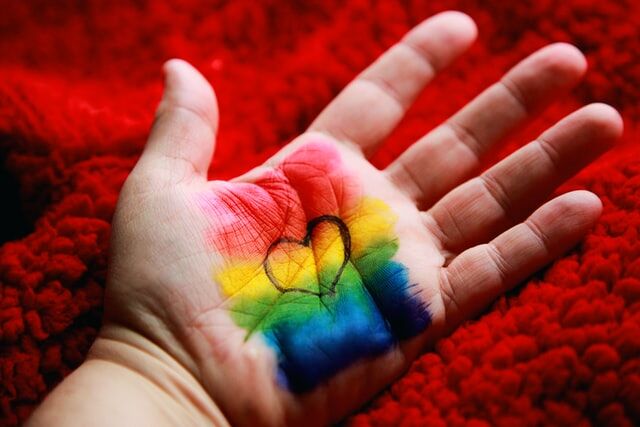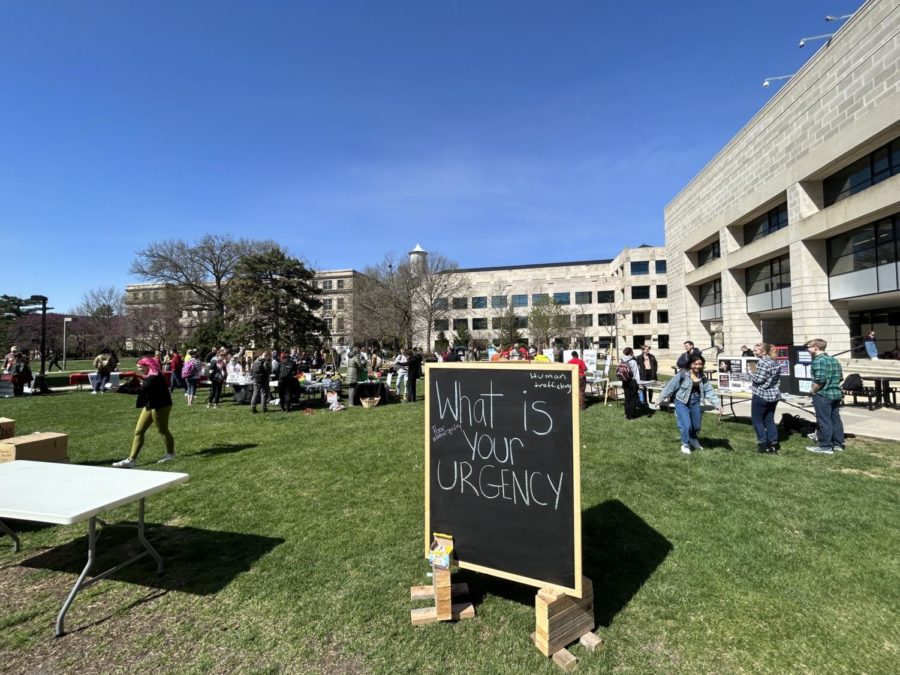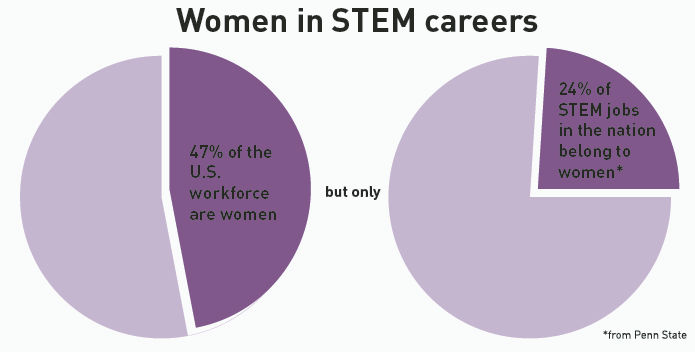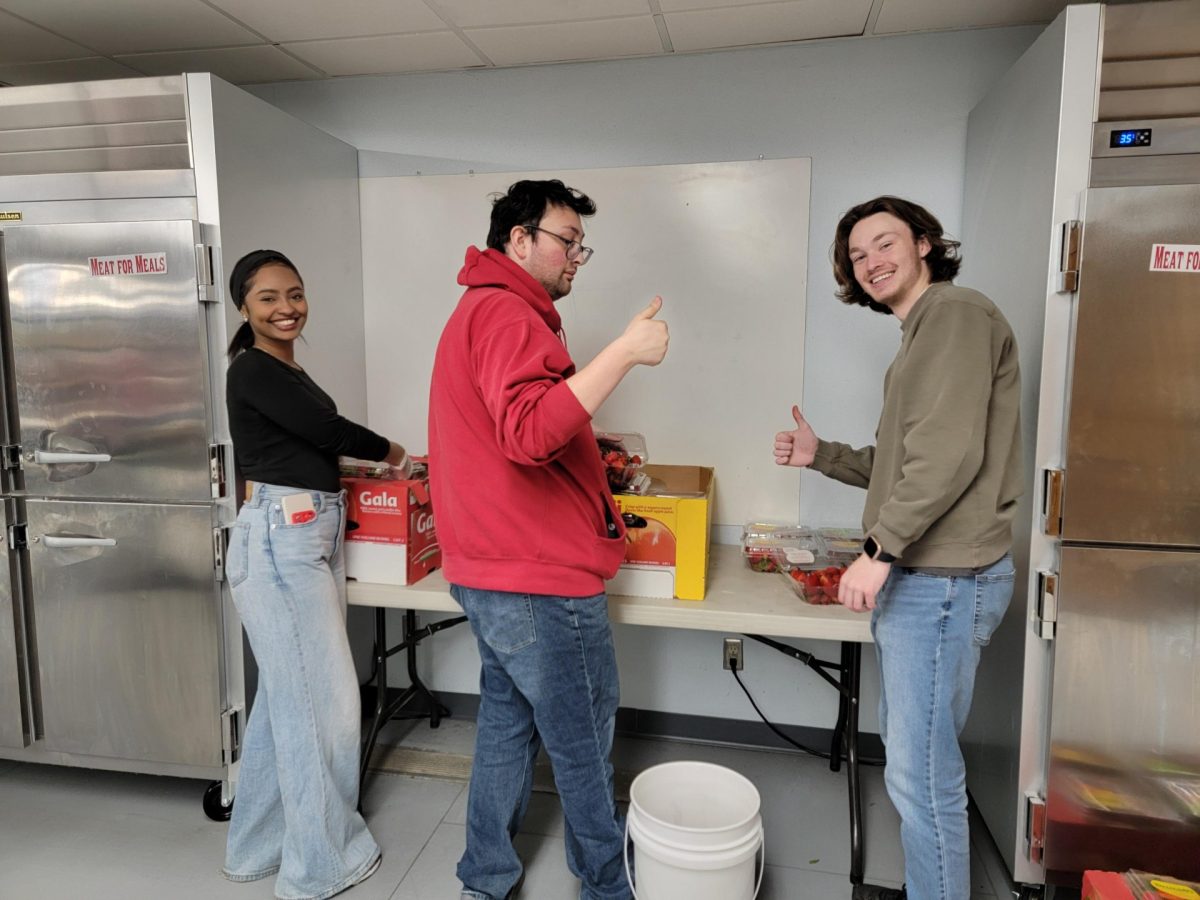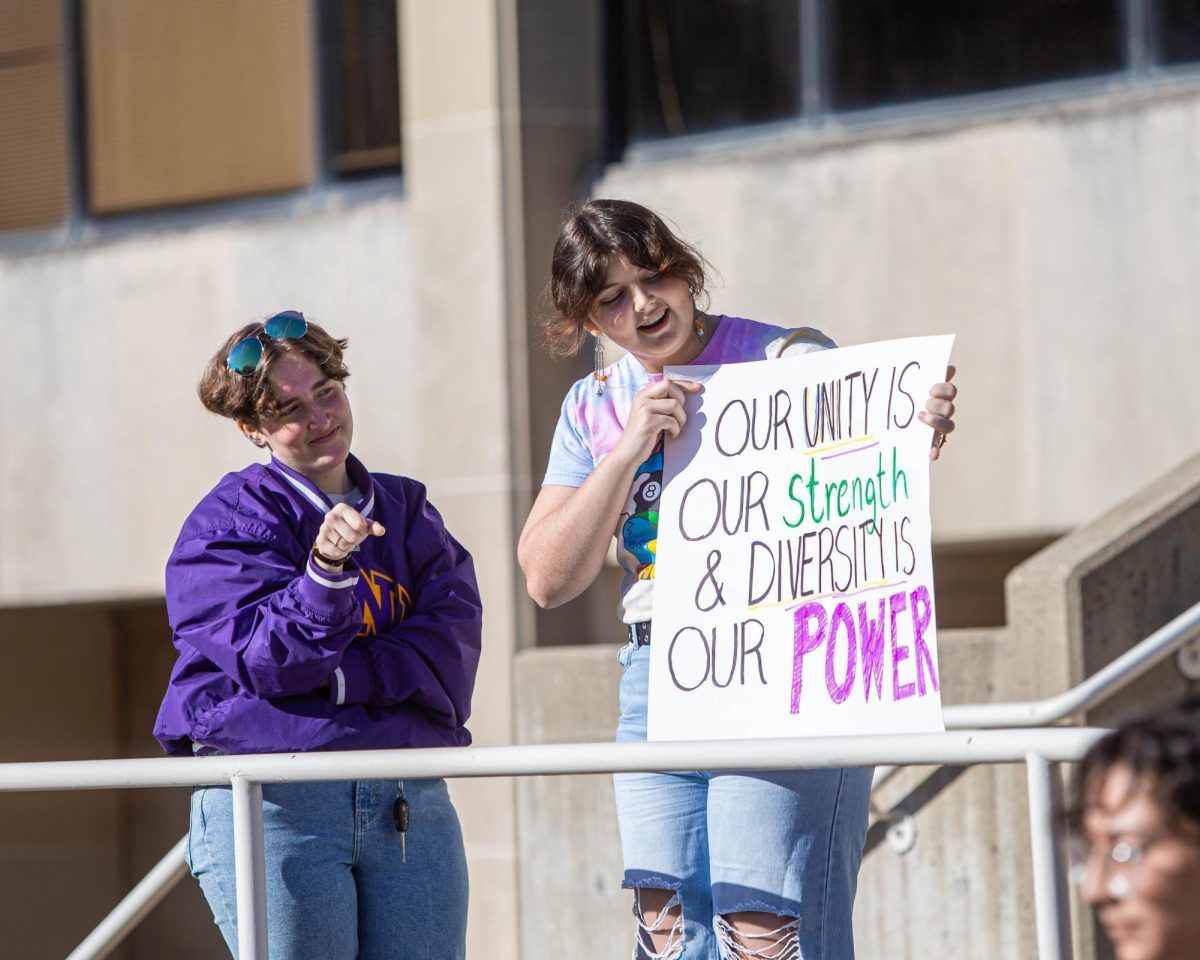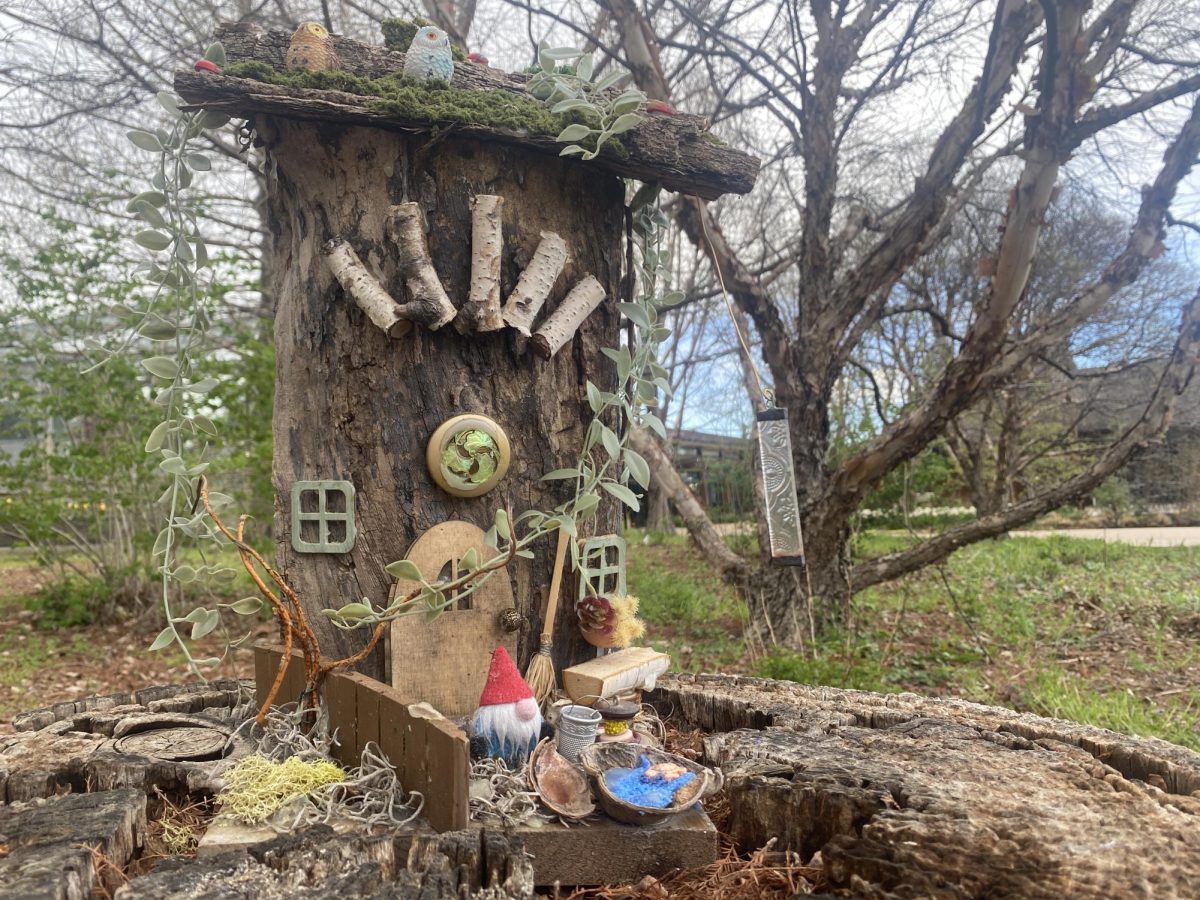Wednesday is National Coming Out Day, an annual day of awareness and recognition of those in the LGBTQIA+ community. While every experience of coming out is different, all are a decision to live openly and authentically.
When Izzy Witten, a senior in architecture, was in middle school, their mother asked abruptly if Witten was bisexual. Unknown to Witten, their mother had gone through private text messages with a friend on Witten’s phone.
“I was terrified, shaking, and I was like ‘Yeah I am,’” Witten said. Witten identifies as nonbinary and queer, using they/them pronouns.
Witten’s mother responded with one word: “okay.” The two never talked about it again.
Witten had a similar experience discussing sexuality with their father as well. Witten said they felt trapped in the car with their father while their father was questioning things like why Witten was friends with certain people and why they had a boy nickname.
“He asked me, ‘Do you like girls or something?’ and I said, ’Maybe I do. Would that be a problem?’” Witten said. “He said, ‘Okay, cool,’ and like the situation with my mom, we never talked about it again.”
Witten said they wish their parents did want to talk about their identity more because it is such a big aspect of their life. They have not come out to their parents regarding their nonbinary identity, but that does not mean a part of themselves is hidden. Witten said they like providing queer and nonbinary representation and helping get LGBTQIA+ knowledge out into the community.
“I’m out and I don’t have to hide anymore, but because I’m not hiding I may be more of a target to certain people,” Witten said.
Witten said there is no end to the journey to finding oneself, as people constantly learn more about their identities throughout their lives.
“It’s one of those things that you can put a label on it, but none of those labels ever felt quite right,” Witten said. “Putting a definition to it made it feel very constricting and like I had to follow rules.”
Galvin Smith, a freshman in graphic design, is nonbinary and bisexual. Smith is also transgender (assigned female at birth). According to Pew Research, 1.6% of individuals in the United States identify as transgender or nonbinary, meaning their gender is different from their sex assigned at birth.
“I never really felt like a girl,” Smith said. “I was a tomboy and not like other girls. I didn’t seem to fit in.”
Smith said they have had multiple coming out experiences, first as a lesbian, then nonbinary, then as transgender.
“I kept trying to fit myself into the male or female box, and it just wasn’t working,” Smith said. “I’m uncomfortable being a woman, but I do not see myself as a man.”
It was Smith’s summer of sophomore year in high school when they decided to come out as nonbinary to their dad.
“I tried to work up the nerve to do it in person, but I just couldn’t,” Smith said.
Smith sent the message via text, along with informational videos on YouTube to explain what nonbinary is.
Smith said their dad said he would love them no matter what and that he would start using they/them pronouns and calling them Galvin. They would later come out as trans in the same way.
Smith said they were never physically harassed at school, but other students would write mean notes or erase their new name on the board and replace it with their dead name.
“Transphobia confuses me. We are just trying to live our lives,” Smith said. “We are not hurting people. We are just trying to live a life where we don’t hate ourselves.”
Spencer Cadogan, a senior majoring in political science, identifies as a gay man. Cadogan said he was raised in a family of members of the Church of Jesus Christ of Latter-day Saints.
“I had a lot of role models in church, but none of them were gay,” Cadogan said. “Because I was so invested in my church, I hid it for a long time.”
Cadogan said he tried to be straight and date women. He went to a Mormon college and thought that would help.
“I went on so many very stressful first dates with women, and I couldn’t connect,” Cadogan said. “I felt so bad because I was like, ‘What am I doing wrong?’”
Cadogan said he did not have a whole lot of friends in middle school that he was comfortable sharing this part of himself with, so he relied on the support of his parents, who were accepting.
“My teenage years were so stressful,” Cadogan said. “By the time I was ready to come out as an adult, I had blocked out so much that I didn’t know that I had come out before. People had to remind me.”
Cadogan said coming out wasn’t one singular event but rather something one is always doing.
“Especially as a masculine gay person, they look at me and they dont think I’m gay. They don’t make that connection automatically,” Cadogan said.
Hannah Varble, a senior majoring in English, is a cisgender woman who is bisexual. Varble grew up Catholic and was exposed to queer people through going to public school.
“For a long time I thought I was just an ally who cared very passionately about my friends and their rights,” Varble said. “Over time I was like, ‘I care way too much about this, what’s going on?’”
Once she realized she was attracted to women as well as men, Varble said she was no longer connected to the Catholic church. She didn’t want her bisexual identity to be made into a big deal, as she was still the same person she had always been.
“I’m out to my friends; I’m out to my community,” Varble said. “Anyone here that asks me, I’m comfortable sharing it.”
In higher education, students are more comfortable being more transparent about their sexual orientation and gender identity, with total openness rising from 64% in high school to an anticipated 82% in college, according to a study conducted by Stonewall.
Varble said she is in a straight-presenting relationship and does not feel the need to tell her family that she is bisexual, including her mother.
“There is that space in our relationship because I don’t feel that I can share that with her,” Varble said. “I’ll never be as close to her as I would like to be because of it, but that’s my choice. I made it, and I am going to continue making it. If one day down the road I decide I do want to come out to her, I will.”
Varble said going forward, she is open with who she is in her identity and does not feel the need to reconcile her past with it.
“It should always be a choice, up to that individual every single time,” Varble said. “If they choose to not make that choice, it doesn’t make them any less queer.”
Varble said coming out, in general, can be a magical world-changing experience, but it can also be very traumatic.
“There’s two sides of that, like a sword,” Varble said.
When coming out, Cadogan and Smith both agree that the most important thing to consider is safety, both adding it is okay to wait to come out if you are in any danger or feel as though your family may not accept you.
“You have to just go up to the people and say, ‘I am trans’ [or] ‘I am gay’ or whatever it may be,” Smith said. “You can answer whatever questions they have afterwards. You’ve already done the hardest part.”
“The scariest part, unless you have serious concerns about your family’s response, is just saying it, saying it out loud,” Cadogan said. “If you just rip off the bandaid, it gets so much easier, and most of the time people’s response is a lot more positive than we imagine it will be.”
For those who are coming out, The Human Rights Campaign has resources and support on its webpage.

